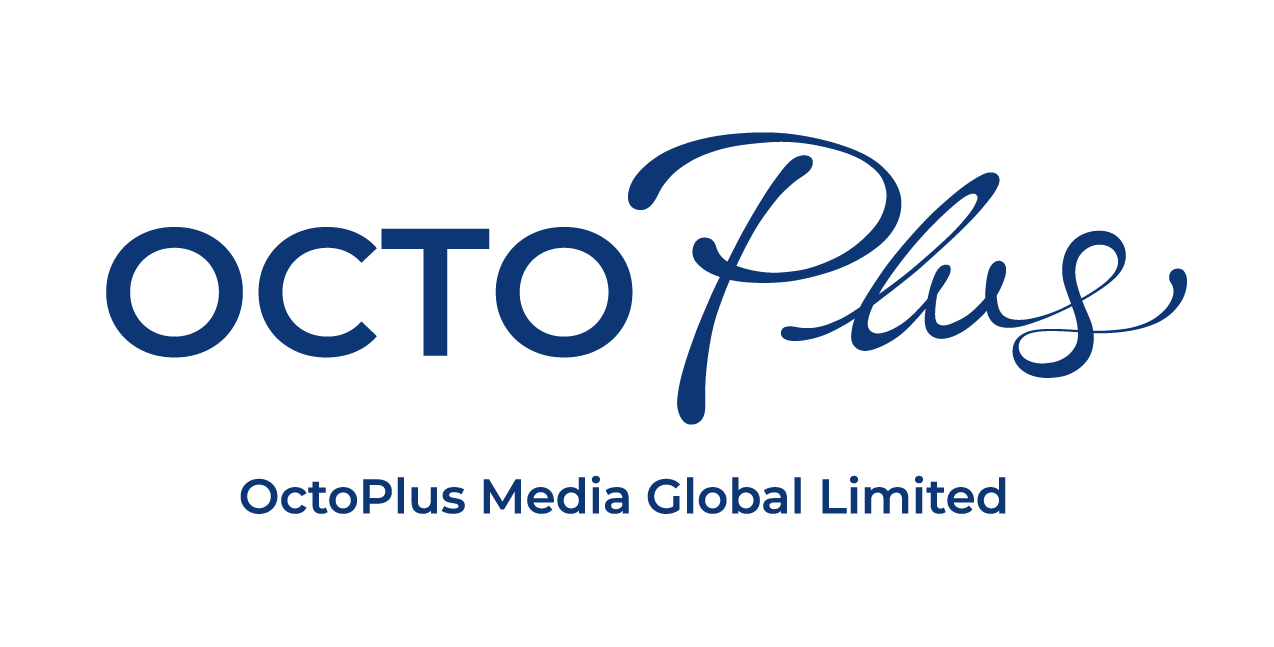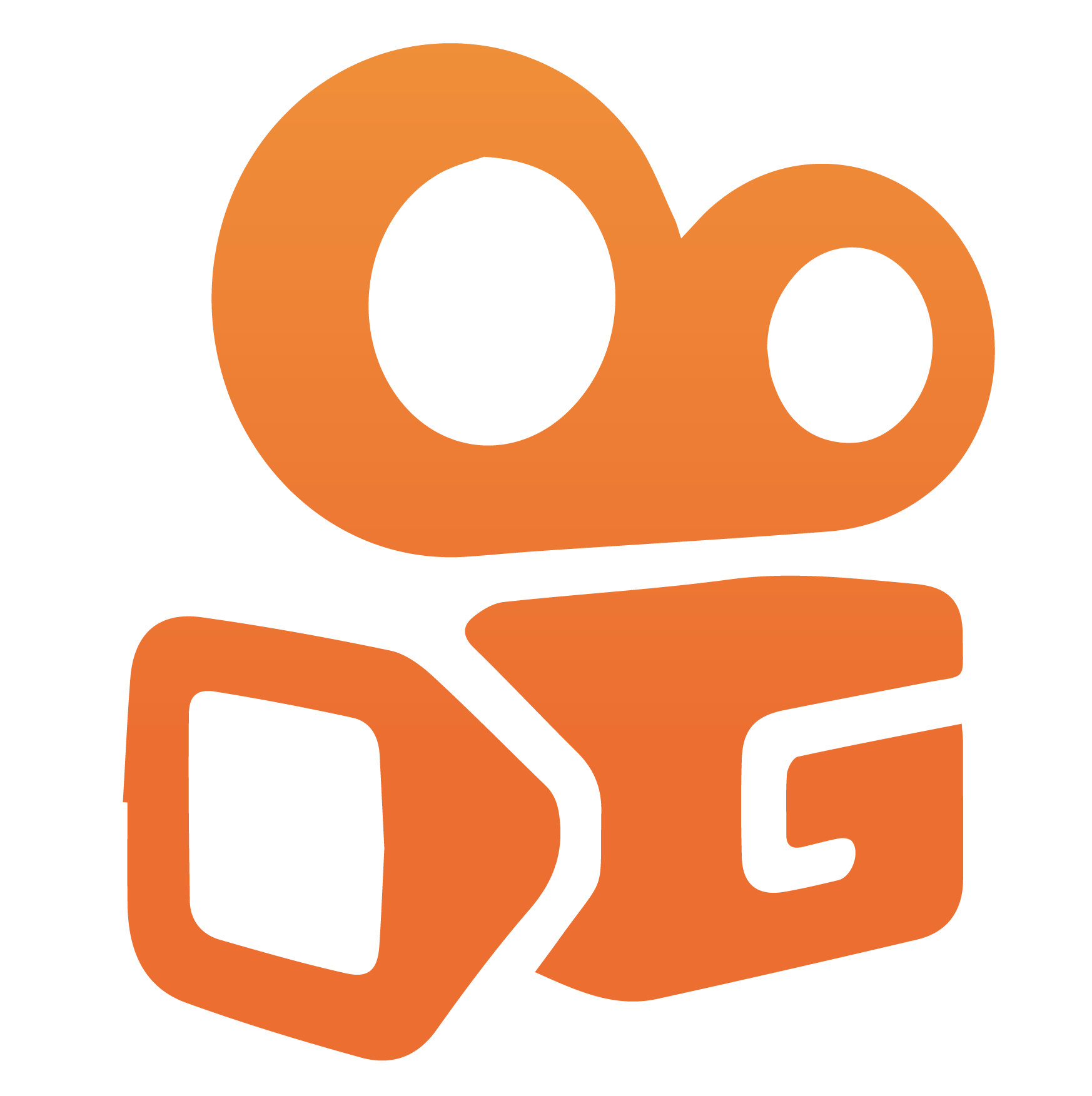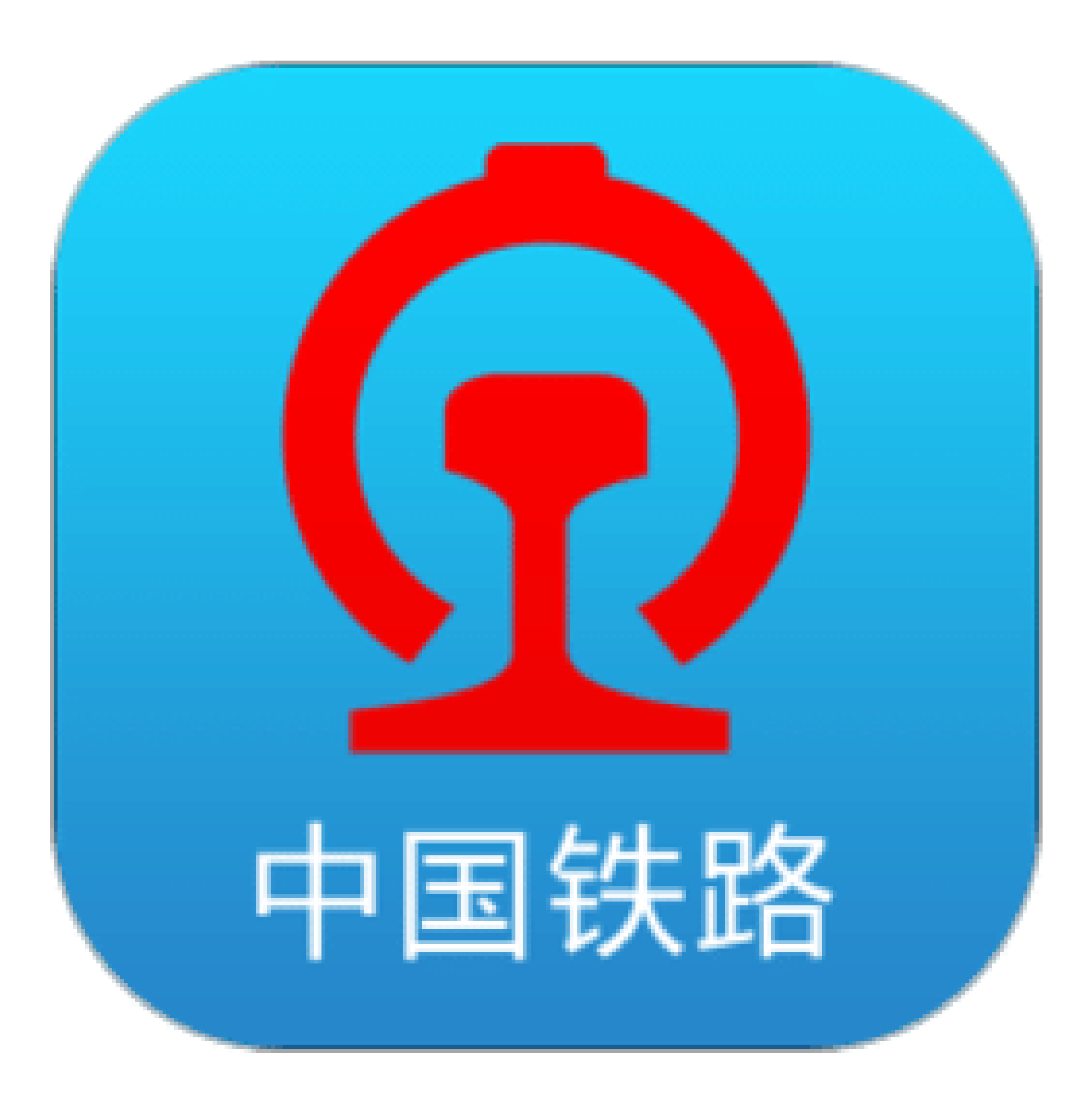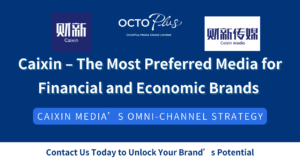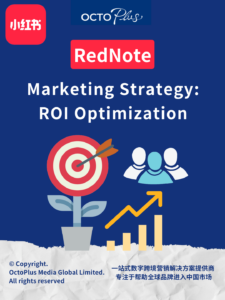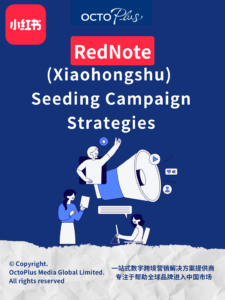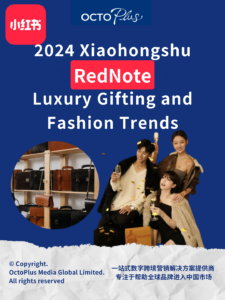China Marketing Insights Monthly Newsletter [February 2022]



Hello,
Wishing you all a very happy Chinese New Year!
We start the issue with a deep dive into one of the toughest industries to advertise for – Pharmaceutical & Medical devices. This is part of our series that focuses on the regulatory policy updates and its impact on advertising.
Next, we look at 2 very interesting trends in China – the rise of virtual digital human influencers and the NFT marketing in China. The first article looks at the latest applications of virtual digital humans segregating into 3 main categories – virtual idol, virtual host & virtual employees – including examples & future implications in the metaverse. The second article looks at the rise of NFT marketing and how the biggest brands & internet giants are entering the NFT market.
We have 2 insights reports – 2021 Douyin Luxury Industry Report & 2021 XHS/Douyin Beauty Brand Report. The first report investigates insights about the luxury market and the “FACT” operation to drive long-term growth. Second report details the beauty industry marketing platform focus with Douyin & XHS attracting close to 75% of marketing spend.
In App of the month, we look at Qzone – one of the earliest social platforms which has seen a huge resurgence in recent times, with more than 560 million monthly active users, of which more than 80% are users under the age of 35.
Sincerely,
Mia C. Chen
CEO & Co-Founder of OctoPlus Media

HOW TO EFFECTIVELY ADVERTISE FOR PHARMACEUTICAL AND MEDICAL DEVICES IN CHINA?
This is part of our series on the regulatory policies updates, reports and advertising laws – Xiaohongshu Banned 39 Brands, December update, November update, October update, Anti-monopoly crackdown, PIPL, Advertising law.
TL;DR Pharmaceutical & Medical Devices advertising in China is very complicated, there are several different departments that are responsible for entire product lifecycle including marketing. Skip to the end to read a summary of some of the rules, dos & don’ts – this is by no means exhaustive, we will guide you through the entire process if you need to advertise in China for medicine or medical devices.
Read on for a deep dive into one of the toughest industries to advertise in China.
Advertising and promotion of pharmaceuticals and medical devices are subject to strict regulations in China. Approval requirements for advertisements and strict product labeling requirements are issues that multinational pharmaceutical and medical device manufacturers often need to be very conscious about.
The State Administration for Market Regulation (SAMR) is responsible for overseeing the vetting of advertisements for drugs, medical devices, health food and food for special medical purposes. Provincial-level SAMR bureaus vet these advertisements within their respective administrative areas.
Advertisements for medical treatment, drugs, formula food for special medical purposes, medical devices, pesticides, veterinary drugs, and health food shall not be published without scrutiny and prior approval. In 2021, China classified medical beauty industry advertising as medical advertising. A new draft measures further stipulate that advertisements of medical treatment, drugs, formula food for special medical use, medical devices, or health food shall not be published through live steaming.
The main laws and regulations which are applicable regarding advertising of medicines & Medical devices in China include the following:
General Advertising laws:
Advertising Law of the PRC
Interim Measures for the Administration of Internet Advertising
Interim Administrative Measures for Censorship of Advertisements for Drugs, Medical Devices, Dietary Supplements and Foods for Special Medical Purpose
The Industry Self-Regulatory Codes of China Advertising Association (“CAA”)
Medicine (pharmaceutical) Specific:
Drug Administration Law
Implementing Regulations of the Drug Administration Law
The Code of Practice of the R&D-based Pharmaceutical Association Committee (“RDPAC”)
Medical Devices Specific:
Regulations on Supervision and Administration of Medical Devices
Measures for the Management of Medical Device Advertisements
The Ethics with Interaction with Chinese Healthcare Professionals published by China Association for Medical Device Industry (“CAMDI”).
There are 4 distinct categories of advertising depending on the type of product and the type of target audience of the advert. Rules differ for non-prescription drugs (or over-the-counter drugs) & prescription drugs. Depending on whether advertising to public or healthcare professional. Let us look at the distinctions below.
Over-the-counter or non-prescription medicines:
A non-prescription drug advertisement shall not contain difficult or confusing medical or pharmaceutical terms which may mislead the public about the effect and safety of the proposed drugs.
Non-prescription drugs can be advertised on mass media or promoted in other manners targeting the public.
A non-prescription drug advertisement must ensure that it is clearly non-prescription, by indicating in the advertisement the over-the-counter (OTC) logo.
The warning to be used in non-prescription drug advertisements must be “请按照药品购买说明,在药师指导下使用” (Please follow the drug purchase instructions and use it under the guidance of a pharmacist).
Prescriptions-only medicine:
Prescription drugs may be advertised on the medical or pharmaceutical journals jointly approved by the Ministry of Health and NMPA, but shall not be advertised on mass media or promoted in any other manner targeting at the public.
Pharmaceutical companies are prohibited from distributing medical or pharmaceutical journals which contain prescription drug advertisements to the public for free.
The name of a prescription drug or the trademark and business name which are registered with the name of a prescription drug shall not be used to name various events.
The warning to be used in prescription drug advertisements must be “This advertisement is for pharmaceutical professionals only”.
Advertising Pharmaceuticals to the Public
The Administrative Measures for Review of Drug Advertisements strictly prohibit advertising for several special categories of medicines:
narcotic drugs, psychotropic drugs, toxic drugs for medical use, radioactive drugs
pharmaceutical precursor chemicals and medicines for drug rehabilitation treatment
drugs specially needed by the military and preparations made by military medical institutions
pharmaceutical preparations made by healthcare institutions
no prescription-only medicines can be advertised in the mass media or promoted in any other manner targeting the general public
Pharmaceutical advertising must contain the drug’s contraindications, adverse reactions and drug advertisement approval number , and the name of the manufacturing or trading enterprise.
Adverts shall not be released in publications for minors or broadcasted in TV channels, programs or sections for minors.
- Cannot contain assertions or guarantees of efficacy and safety; specifications about the cure rate or efficacy rate; comparisons with other drugs; endorsement by a spokesperson; and anything that is inconsistent with the approved instructions.
- Cannot contain words and expressions like “safe”, “safe, non-toxic and with no side-effects” and “minor toxic side-effects”; or containing express or implied statements that the ingredients are “natural”, thus ensuring safety;
- Cannot have contents that induce purchase such as “hot sales”, “rush to buy or use on a trial basis”, “family necessities”, “free treatment” and “free gifts”. For more comprehensive prohibited words, read our post on censorship;
Advertising medical device to the Public
Adverts for specific devices are forbidden by NMPA from manufacturing, trading or using.
Adverts for devices for medical institution’s internal use are prohibited.
Adverts must contain the name of the approved medical device, the name of the manufacturing enterprise, registration certificate number and advertisement licence number.
All information must conform to the product certificate issued by the NMPA.
Advertising Pharmaceuticals to the Healthcare Professional
Both over-the-counter medicines and prescription-only medicines can be advertised to healthcare professionals
For prescription-only medicines that can only be advertised to healthcare professionals, the advertising should be marked “此广告仅供医疗和制药专业人士使用”in a prominent position.
In conclusion, Pharmaceutical & Medical Devices advertising in China is very complicated, there are several different departments that are responsible for the entire product lifecycle including marketing. Reach out to us for deep-dive research into specific therapeutic areas or to activate advertising in China. In the meantime, here is a summary of some of the rules, dos & don’ts – this is by no means exhaustive, we will guide you through the entire process if you are interested in advertising.
Pharmaceuticals Dos
- Obtain pre-publication approval unless exemptions apply
- List product name, required legends, advertisement permit number, product manufacturing permit number and the drug manufacturer/distributor
- Always use generic product name in advertisements, generic product names must be displayed more prominently than the brand names
Pharmaceuticals Don’ts
- use unscientific assertions or claims regarding efficacy or usage claims
- conduct comparative advertising with similar products, or conduct “before and after” references for own product
- use superlative language
- use references to cure rate, efficacy rate or product awards.
- use the name or images of medical institutions, academic institutions, doctors, and patients as testimonials to the advertised claims
- publish advertisements on publications or press media that target minors or otherwise to appeal to minors, or advertise in the name of a minor
- advertise for narcotics, psychotropic drugs, poisons for medical use, radio pharmaceuticals or drugs specially needed by the army
- use unregistered trademark in drug advertisements
- use registered trademarks together with generic product name
INSIGHTS REPORT - 2021 DOUYIN LUXURY INDUSTRY REPORT
According to the “2021 Douyin Luxury Industry Report” released by Trend insight, China’s luxury goods consumption growth will lead the world in 2021, and major brands have deployed content fields one after another.
The consumer group in the second-hand luxury goods market continues to grow, and the luxury consumer age group is gradually younger. According to the analysis of the report, the 18–23-year-old Gen-Z group pays more attention towards luxury goods than the 41-50-year-old Gen-X group, while the 24-40-year-old Gen-Y and Boomers II group over 50 years old pay slightly lower attention towards luxury goods. The Gen-Z group will be the new target group of the brand.
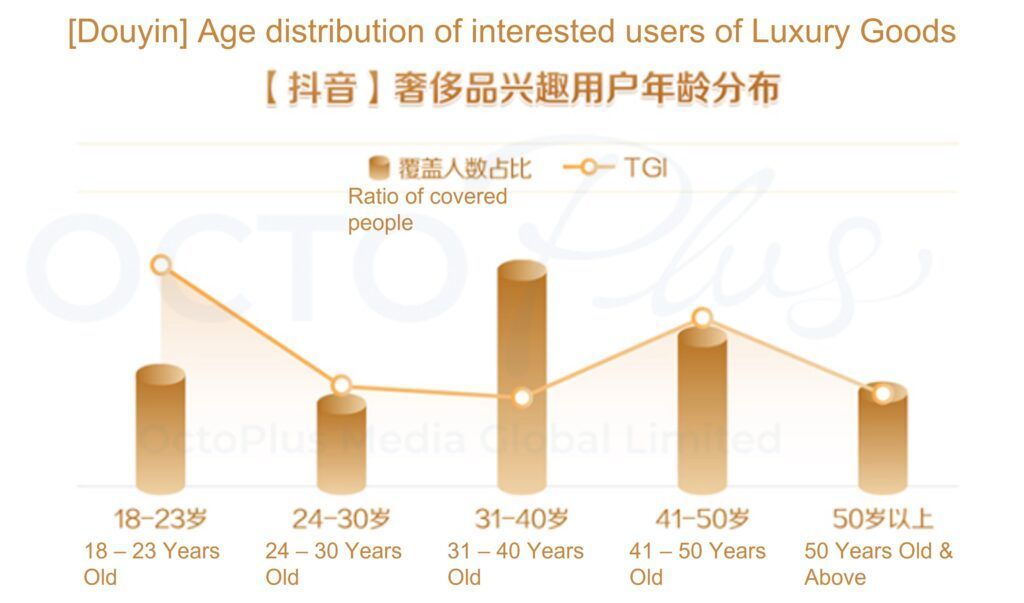
In Douyin, women are still the main force of interest in luxury goods, while users in third tier to lower tier cities show a high level of attention towards luxury goods. From January to November 2021, from the analysis of luxury interest users follow categories, the Top 2 most popular luxury categories for men and women, mainly clothing and luggage, followed by shoes, jewellery, watches, etc.

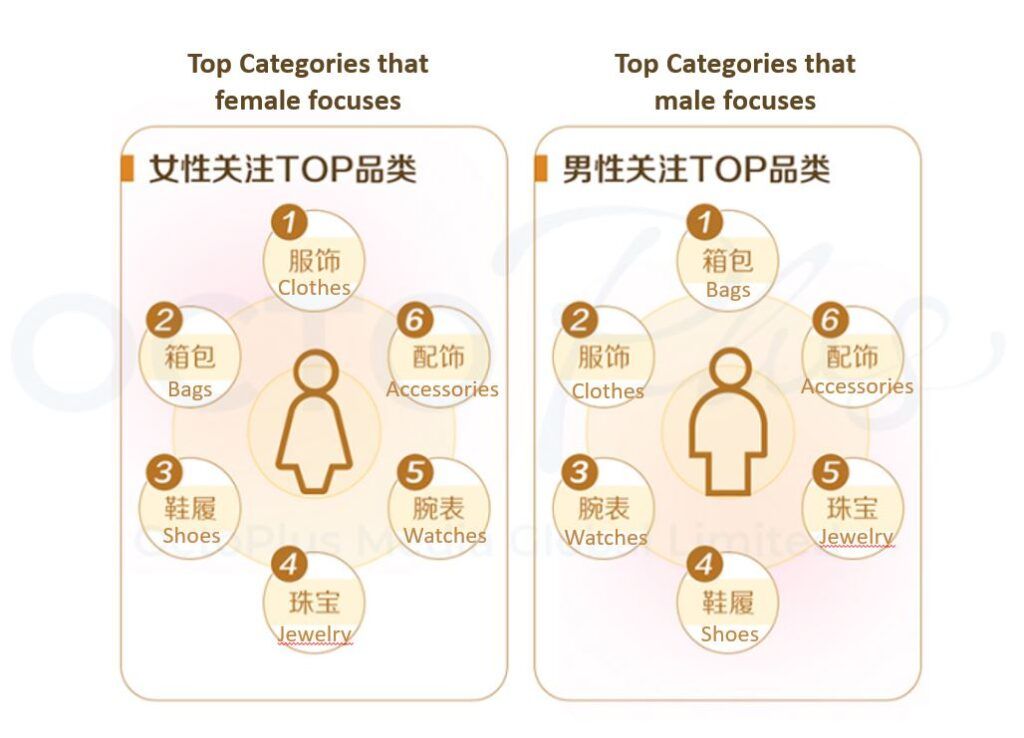
“FACT” operation to drive long term growth of luxury goods business
FACT: F – Field (self-broadcasting by merchants) A – Alliance (talent matrix) C – Campaign (marketing activities) T – Top KOL (top V)
For luxury content, through the combination of these four business matrices, from daily sales operation and adopts the methods of “self-broadcasting by merchants” and “talent matrix” to accumulate crowds, long term operation and expansion of traffic, by realise user assts to make business grows effectively. In addition, the brand also uses “marketing activities” and the influence of “top V” to expand the popularity and gather traffic to make the product explode! Achieve win-win results for products and marketing.
The brand “Bally” runs through the formulation of self-broadcasting plans, and accumulates brands based on fan portraits. Through daily comprehensive collaboration of talent matrix, the strong publicity of star talent and the strong fan recommendations will be launched at the same time. In addition, Bally and luxury talent will also cooperate to hold special events during Valentine’s Day and luxury fashion season, with popularity expansion and concentrates traffic allows products to be explode.
2021 January – November trends in number of luxury content creators on Douyin
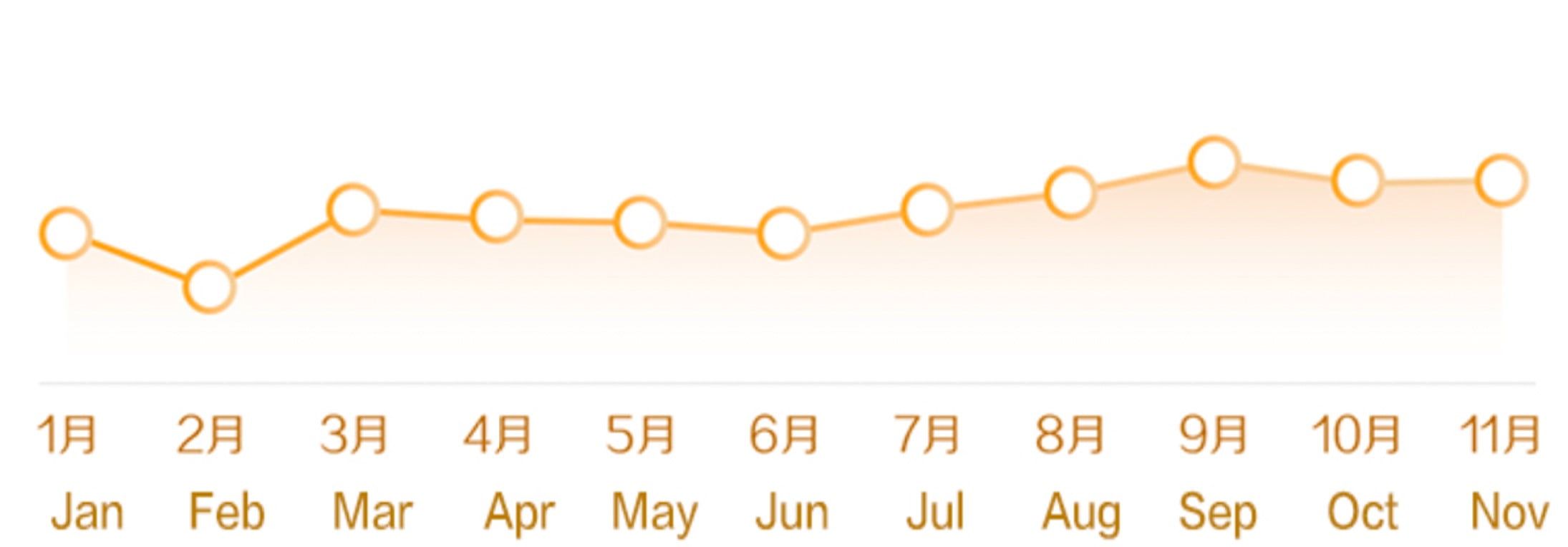
Year-on-Year growth in the number of talents at all levels
Ten million fan talents: +260%
Millions fan talents (100m – 1,000m) : +173%
Ten thousand fan talents (1m – 100m) : +140%
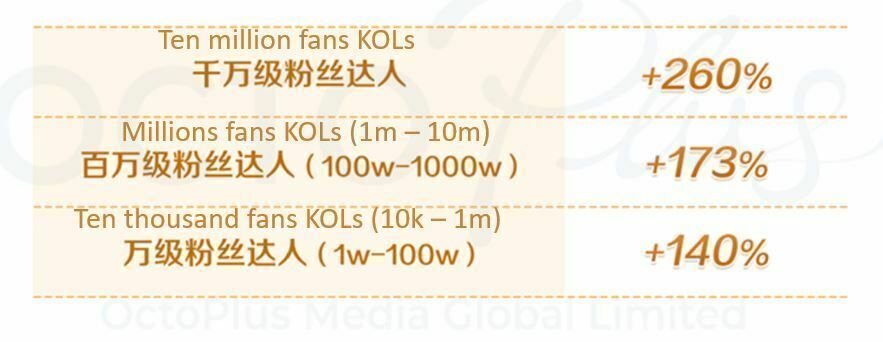
Contact us to download the full report in Chinese.
2021 DOUYIN/XHS BEAUTY BRAND REPORT
According to “2021 Beauty Industry Douyin/XHS Marketing Report” jointly released by Youmi Youshu and Beauty Expo, the market size of China’s beauty industry has steadily increased, however big brands and cutting-edge domestic products are caught in a scuffle. From the launch of new products, the cultivation of content, to the cultivation of user’s minds and the creation of brand tonality, Xiaohongshu and Douyin have played an important role in the rise of beauty brands, and they are the rearrangement of social media marketing for beauty brands.
Douyin & Xiaohongshu Marketing Analysis
According to the analysis of the report, beauty brands mainly focus their marketing budget on social media platforms such as Douyin and Xiaohongshu. Among them, Douyin has become the platform with the largest share of brand investment in marketing budget, accounting for 43.53%. The second is Xiaohongshu, accounting for 29.41% and close to 30% of the total. In addition to Douyin and Xiaohongshu, brand owners also invest their marketing budgets on mainland social media platforms:
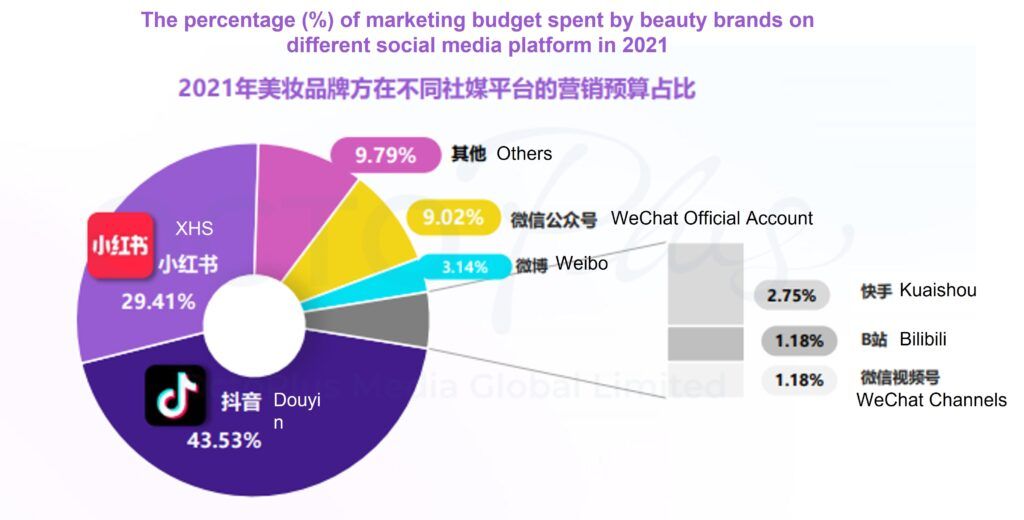
- 9.02% WeChat OA
- 3.14% Weibo
- 2.75% Kuaishou
- 1.18% Bilibili
- 1.18% WeChat Channels (Video) Account
- 9.79% Other platforms
In 2021, overall the trend of interaction volume of Douyin and Xiaohongshu’s beauty makeup has gradually upward, the amount of Douyin beauty content interaction has continued to rise since April, and reached a small peak of 122.7 billion+ during the 6.18 shopping in June, total live streaming even accumulated up to 2852w hours. The peak interaction volume of Xiaohongshu’s beauty notes appeared in August and October, and the monthly interaction volume reached 1.5billion+, on year 2021, the number of notes in October was the highest, and the number reached 165w+.

The report subdivides the beauty industry into three categories: makeup / skincare / personal care, and finds that Douyin platform has the most skincare content, while Xiaohongshu has more makeup content. From the perspective of the Douyin beauty market, skincare content ranks first, accounting for 41.5%, while personal care content accounts for 33.9%, ranking second, and the third is makeup content, accounting for 24.6%; in the content distribution for makeup products, Xiaohongshu contribute the highest content while Douyin has the lowest content, accounting for 55.2%, followed by skincare accounting for 412% and personal care accounting for 3.6%.

Douyin & Xiaohongshu Beauty Expert Ecology
Through the analysis of the report, Douyin and Xiaohongshu have similar levels of fans of beauty makeup adults.
76.56% of Douyin Beauty KOC fans are in the order of less than 100,000, followed by 100,000 – 1,000,000 followers, accounting for 19.18%. The proportions of mid-level (1million – 5 million fans) and top (5 million+ fans) are 3.71% and 0.55%.
68.87% of Xiaohongshu beauty KOC talents have less than 10,000 fans, nearly 30% of the lower-level talents have 10,000 – 100,000 fans, accounting for 27.50%; mid-level talents have 100,000 – 500,000 fans, it accounts for 3.25%; the numbers of fans of the top talents is 500,000+, accounting for 0.38%
Analysis of Three Brand Types: Traditional & Cutting-Edge vs Domestic & International
Douyin sales analysis: Gradient differentiation of self-broadcast sales 自播销量占比梯度分化
The average monthly sales volume of the three major brand types is more than 250,000, and the performance is relatively average, the sales of traditional international brands are the highest, and the monthly average live broadcast sales of cutting-edge domestic products are the highest, but there is no significant gap with the other two categories.
Live broadcast sales account for more than 50% of product sales, with an average monthly live broadcast of 1,700+, while brands self-broadcast sales have a gradient differentiation, and self-broadcast sales account for the proportion of live broadcast sales: 8.23% of traditional domestic products > 32.27% of cutting-edge national brands > 51.92% of traditional international brands.
Under the general trend of Douyin’s self-broadcasting, traditional domestic products are currently at the forefront, reflecting its emphasis on Douyin’s own channel construction and private domain operations. Judging from the statistical analysis results of the three major brand types, Douyin live broadcast has become an important incremental channel for beauty brands, and the self-broadcasting trend of traditional domestic products is the most obvious.

NFT MARKETING IN CHINA

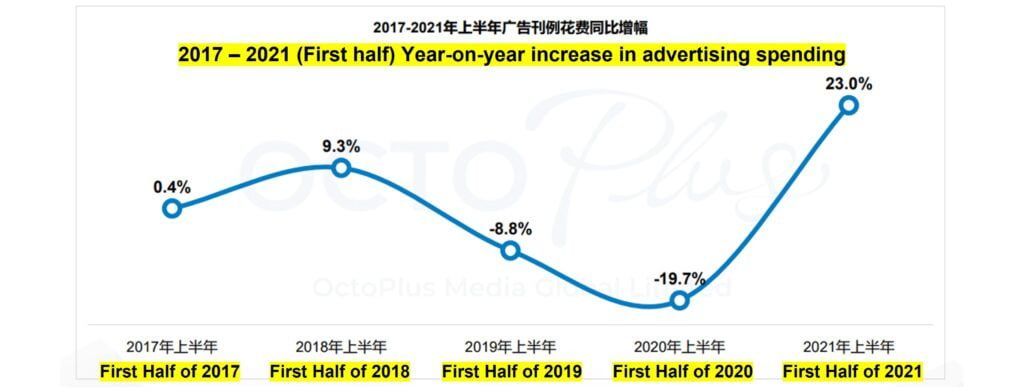
NFT is the abbreviation of Non-Fungible Token, which is translated as “非同质化代币” in Chinese, it is a native digital asset issued on the blockchain platform. The craze of NFT and Metaverse has become popular in China’s marketing circle.
With the outbreak of the digital economy and the vigorous development of digital artworks, NFTs are becoming the “top stream” of the digital artwork market. Since this year, Porsche, McDonald’s, Givenchy, Coca-Cola, Li Ning, Ali, Tencent, more and more brands and internet giants have been testing NFT marketing, creating brand NFT digital derivatives, arranging related products and superimposing brand value.
McDonald’s launched NFT work “Big Mac Rubik’s Cube” in 2021 to celebrate the 31st anniversary of entering the China mainland market and the official opening of the new Shanghai headquarters building, which has caused countless netizens to watch and discuss.
A piece of news about Jay Chou during the New Year’s Day holiday rushed to the hot search, the trendy brand PHANTACi founded by Jay Chou and his friends released the first NFT project “Phanta Bear”, limited to 10,000 pieces, with a unit price of about 6,200 yuan. 3,000 units were sold within 5 minutes, and all were sold within about 40 minutes, with a revenue of about 62 million yuan.
Tencent, ByteDance, Xiaohongshu, Baidu…7 internet giants have successively entered NFT, and a new NFT industry ecology is taking shape. Xiaohongshu launched the digital art platform R-SPACE in November 2021. Through different activities, it has released many [R-Digital Collections].
In June 2021, Alibaba and Dunhuang Art Institute jointly released two NFT digital assets including Dunhuang Flying Apsara and Nine-Coloured Deer Skins. A limited-edition skin on Alipay’s “Ant Chain Fan Granule” applet with an original price of 9.9 yuan Dunhuang Flying Apsara NFT payment code skins was hyped up to 700,000 – 1.5 million on Idlefish (a famous second-hand trading market app in China) which has been taken off the shelf, and the price has increased from 70,000 to 150,000 times.
In 2021, Tencent created China’s first NFT trading platform “Magic Core”, which currently mainly sells digital artworks co-branded by artists. JD.com also launched a NFT commemorative certificate supported by its own blockchain technology.
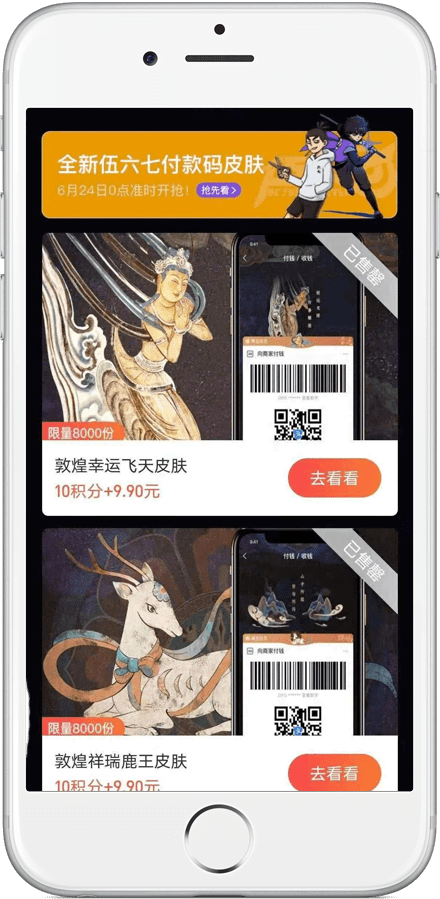
In addition to internet giants PK in the NFT field, luxury brands have also entered the game. Luxury brand Gucci has announced the purchase of an undisclosed number of virtual plots in The Sandbox, a “metaverse” concept project, according to Golden Finance. Allegedly, Gucci may launch Gucci-themed NFTs and retro bags on the platform. In addition to the fashion-focused virtual space, Gucci will also release virtual wearable items for The Sandbox players to purchase and wear-in-game.
Contact us for exclusive advertising strategies.
CHINA’S VIRTUAL DIGITAL HUMAN INFLUENCER
Recently, the State Key Laboratory of Media Convergence and Communication, Communication University of China, Media Big Data Center, and Number One Idol (Beijing) Digital Technology Co., Ltd. jointly released the “China Virtual Digital Human Influencer Index Report”, which pointed out the core viewpoints, classified reports, development suggestion.
With the rise of the virtual digital human of the metaverse concept in 2021 and the increasing demand for digital life among Chinese people under the epidemic, consumer-grade VR hardware and smartphone applications, the development of virtual digital human is rapidly heating up. The virtual digital human defined in the report is created through various aggregation technologies, possesses the image, personality, behavioural characteristics of a “human” and has the ability to interact with a “human”. From the perspective of future media forms and service models, virtual digital people will be used as a new media role, widely used in the new ecology of the metaverse, and will be responsible for information production and transmission, a new medium of connection between things or IoT to IoT.
The application value of virtual digital human
With the advancement of aggregated technologies such as computer graphics, deep learning, speech synthesis, and brain-inspired science, virtual digital humans are gradually evolving into new species and new media. More and more virtual digital humans are being designed, produced and operated, the application scenarios have been greatly expanded, and the application value is gradually being discovered, activating the metaverse ecology, and will become an important carrier for human beings to enter the metaverse in the future.
Content Reconstructing
Reconstructing the content production mode to greatly improve the efficiency and quality of digital content production.
Virtual digital humans have been widely used in cloud games, film and television production, virtual entertainment, virtual anchors and other fields. Based on more mature software and hardware integration technology, processes such as modelling, computing, rendering, editing, and film combining are gradually automated, intellectualised and real-time. Compared with live-action performances, it has more freedom to play, and the creative content and extension space are liberate. Creators can collaborate online and collaborate efficiently, greatly improving the efficiency of content production and greatly reducing production costs.
Brand Application
Redefine the fan economy and help branding more outstanding
Brand endorsements, virtual concerts, and virtual live broadcasts have become mainstream application scenarios for virtual idols and virtual anchors. The personality, words and deeds of virtual idols are controlled by the brand, which is more controllable and safer than real stars, and can be extended and applied to more diverse virtual scenes in the metaverse, realising multi-layered communication, virtual idol IT transformation will become a popular trend, and the fan economy is rapidly rising.
Digital Transformation
The core starting point of digital transformation, helping enterprises to improve the quality and efficiency of production and operation
Extended Infinity
The core digital assets of the Metaverse carry the infinite imagination of “Second Life”
The virtual digital human will become the core interactive carrier and entrance of the metaverse, everyone may enter the metaverse with a virtual avatar, experience digital content such as games, entertainment, social interaction, education, sports, etc., to start a “second life” and pursue a truer, more ideal self. In the future, virtual digital human will have legal digital identities and be bound with personal digital assets to ensure personal interests and asset security.
According to the report, virtual digital humans can be technically divided into two categories: intelligent driving and real driving, and can be divided into three categories in application: identity type (such as real virtual avatar), service type (such as virtual employee) and performance type (such as virtual idols). According to the “influence” evaluation in the report, the most popular virtual digital human in China will be analysed and evaluated: virtual idols, virtual host and virtual employees. The following are simple definitions and main representatives of these three categories.

Virtual Idol
Definition: Appearing as “artists” such as singers, actors, models, internet celebrities, game masters, etc., with distinct personalities and talent settings, active in major social platforms, video platforms, variety shows, etc., and gaining more through the accumulation of traffic and popularity “work”.
At present, the most well-known virtual idol if Liu Yexi, a virtual beauty expert who can catch monsters. Her main active platforms are Douyin and Xiaohongshu, and her specialities are monster hunting and beauty. She became popular with just one Douyin video. As an internet celebrity IP with both “cyberpunk and Chinese fantasy” styles. She has become a benchmark for the virtual idol track.
In addition, there is a 15-year-old girl named Luo Tianyi in the second dimension. She is a virtual singer and artist in Mainland China, which debuted in 2012. She is characterised by being natural, gentle and meticulous, mainly active in Bilibili platform. During her first performance on 2021 Spring Festival Gala night, won a huge fan base and her original protest songs and public welfare songs have won her first social value of virtual idols.


Virtual Host
Definition: The “host” of the virtual world, including virtual hosts and virtual reports of major media on the professional track; and virtual UP hosts who are active on video platforms are operated by individuals or enterprises, and the number is huge.
The main representative is the sweet and friendly virtual digital person “Xiao C”, a new member of the artificial intelligence editorial department of CCTV, she is the host of the “Two Sessions C+ Detective” series of live broadcast programs, and is the first live broadcast representative of “3D hyper-realistic digital human” in the media industry.
Virtual Employees
Definition: Launched by the enterprise, as “digital employee” of the enterprise, it displays the products, services and culture of the enterprise to the outside world. One type is mostly used as “smart customer service”, and the other type starts to “absorb fans” independently on social and short video platforms in the form of idols and celebrities.

The typical case here is double eugenics AIYA, who debuted as a C-ranked student. She is the first “AI virtual brand officer” launched by aiBank in the financial industry. She is also an unswerving explorer with strong AI computing power, outstanding financial quotient, and versatile talents in the future of bank.
It launch a two-dimensional version on November 18, 2021 and launch NFT digital collections in the banking industry for the first time. On December 30, it will launch a hyper-realistic version, and interact with CCTVV virtual anchor Xiao C to debut. Lastly, it ranked first in the ranking of virtual employees with the highest scores of brand affinity, loyalty, communication, and innovation.

Another named “Ha Jiang”, characterised by a cool girl with blue hair, specialising in singing and fashionable outfits, “made her debut” as public welfare ambassador for Harbin Beer in 2019, and then became active on various platforms. In just two years, from the first virtual road traffic safety publicity ambassador and brand public welfare ambassador, China-chic KOL (国潮) , e-sports anchor, and then to the recent new identity “Warner’s first virtual musician”, her development has broadened the operation ideas of virtual employees, letting more brands see the new key to open the metaverse.
According to the polls and questionnaires of the “2021 China Virtual Digital Human Influencer Survey”, the public’s awareness of virtual digital human is presented. The voting results show that the number of votes is 170,000+, and the TOP 1 of each category is represented by Liu Yexi as virtual idol; CCTV Xinke Niang represents a virtual anchor; aiBank AIYA is a virtual employee representative. Results of the questionnaire survey show that for different types of virtual digital human, the public has significant differences in their expectations for their appearance, personality, technical capabilities, and service capabilities: more than 60% of users are most concerned about the appearance and works of virtual idols, 66% of users focus is on the hosting styles of virtual anchors, but 50% of users believe the most important thing for virtual employees is technical service and cross-border cooperation ability.
Lastly, the report gives five suggestions for the development of the index:
Building an omni-channel media multi-modal communication system
Building a continuous event marketing system
Excavate personalised communication content
Recognise importance of social value communication
Enhancing independent innovation capabilities
Development Prospect
Combined with project research, industry interviews, and expert interviews, the research group made the following prospects for the development of the virtual digital human industry:
It is expected that by 2025, the “reproduction” speed of virtual digital human will exceed the reproduction speed of human beings on earth
Virtual digital human will become a new interface for human-computer interaction, carrying the immersive experience of the digital world
Programmable virtual digital human will realize intelligent and large-scale production of content, and form a new industrial ecology
In 2030, more than 10 unicorn companies will be born in China’s virtual digital human race
Technologies such as AI emotional algorithms, multimodal human-computer interaction, and brain-like science have developed by leaps and bounds driven by the virtual digital human industry
The virtual digital human industry will give birth to new occupation such as “Vtuber”, “technical art”, Vup” etc., and the talent gap of related industries is as high as 1 million
Virtual employees have become standard in consumer goods, finance, real estate, property, education, cultural tourism and other service industries
With the explosive growth of virtual digital human, the construction of a trusted digital identity governance system and network security system is imminent, and it is urgent to establish a traceable distributed digital identity system

APP OF THE MONTH – QZONE

Qzone is a QQ subsidiary product with Microblog function developed by Tencent in 2005. Qzone has functions such as talk, log, share, photo album, video, message board and so on. Its web application center also has many third-party applications, among which the famous applications are QQ Farm, QQ Ranch etc.
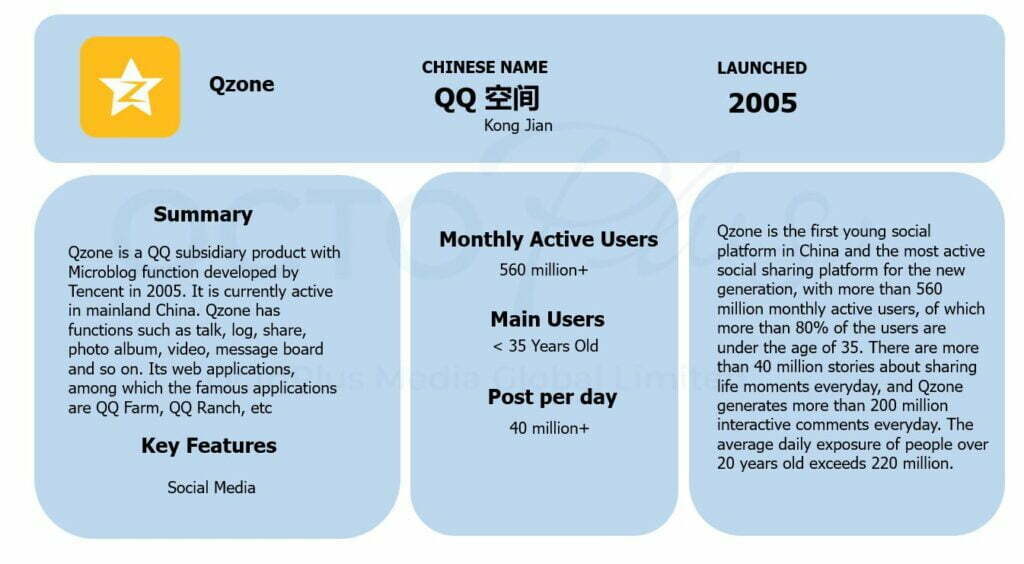
- Qzone is the first young social platform in China and the most active social sharing platform for the new generation, with more than 560 million monthly active users, of which more than 80% are users under the age of 35. Every day, there are more than 40 million stories about sharing life moments, and QQ space generates more than 200 million interactive comments every day, and the average daily exposure of people over 20 years old exceeds 220 million.
China has the largest generation Z (15 – 23 years old)
Generation Z is optimistic about consumption, with diversified consumption fields and rapid growth, accounting for 40% of the overall consumption power
Gen-Z has considerable income, a wide range of sources, and has multiple sources of income
Gen-Z has a strong pursuit and recognition for expanding their social circle
Friend recommendation and online advertising are the top two ways for Gen Z to learn about product brands. Most young people think that verbal recommendations from friends and online advertising are the most common ways to learn about brands.
QQ Space Advertising
QQ space ads appear in friend’s newsfeed, native social ads integrated into user UGC (User Generated Content), possess user’s natural and uncompromising attention, suitable for brands to communicate in social scenarios. Ads are displayed natively and diversity.

1.Promotion of brand activities:
in the third position on the homepage, interspersed in the friends’ news
It has the characteristics of highly native and low disturbance, supports full open comments and can pin 5 high-quality comments at the top. Branded page cards are two display forms of video stories.
2.Promote my application:
It is located in the seventh position of the homepage, interspersed in the friends’ news It has the characteristics of highly native and low disturbance, supports full open comments and can pin 5 high-quality comments at the top
Supports free-to-play interaction, multi-image carousel, local ads, graphics, and videos.
3. Promote my products:
Immersive video streaming.
Click on any video content to enter the video information stream, swipe up to watch more video content, and an advertisement will appear, showing the products to users with maximum stimulation.
4. Promote my store:
It is located in the seventh position of the homepage, interspersed in the friends’ news
It has the characteristics of highly native and low disturbance, supports full open comments and can pin 5 high-quality comments at the top.
It also supports display forms such as arbitrary interaction, multi-picture carousel, local advertising, graphics and video.
To start your QZone marketing plan, get in touch with us!
-End of the Newsletter-
Feel free to talk to us
It’s a team with one single shared goal, which is our client’s success. Deliver results for your business now.
